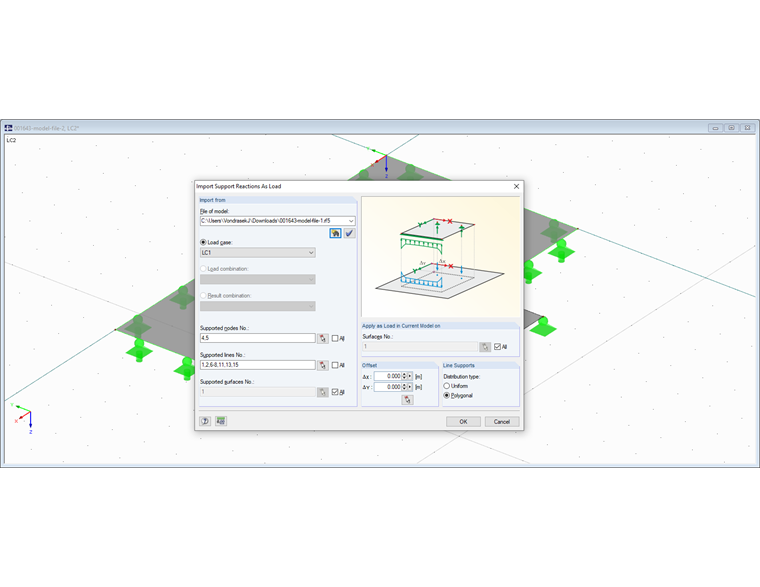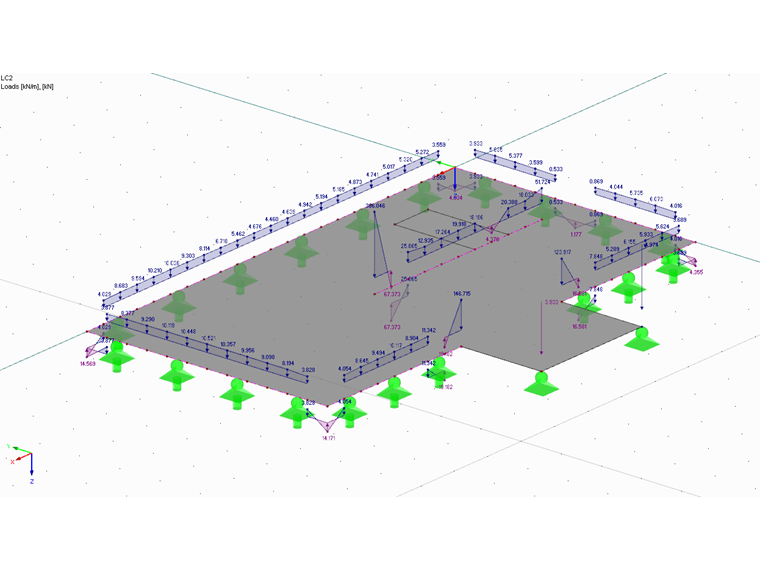In a 3D building model, this force flow is ensured automatically by the coherent modeling of ceilings, columns, walls, foundations, and so on. Sometimes, however, you deliberately decide against modeling on the entire model, which then means that you have to perform the load transfer manually.
Load Transfer Option in RFEM
For this purpose, the "Import Support Reactions as Load" option is available in RFEM. With this option, you can transfer or exchange support reactions from different model files. This simplifies the workflow enormously, because it is possible to skip the manual input of loads and thus minimize errors, for example due to incorrect entries.
Load Transfer Functioning
In the load import dialog box, you can select a model file from which you want to import the loads. You have different options: Import a load case, load combination, or result combination (you have to select between max. or min. values). Additionally, you can select all or only certain support reactions and set the transfer with a constant or polygonal distribution. The Z component of the selection is then imported into the current load case of the model. If the initial model is modified, the loads must be imported again.
Conclusion
The option provides an easy way to merge the loads of different models. With the help of the result summary in the calculation tables, it is also very easy to check the plausibility by comparing the sum of the loads with the sum of the support reactions.


